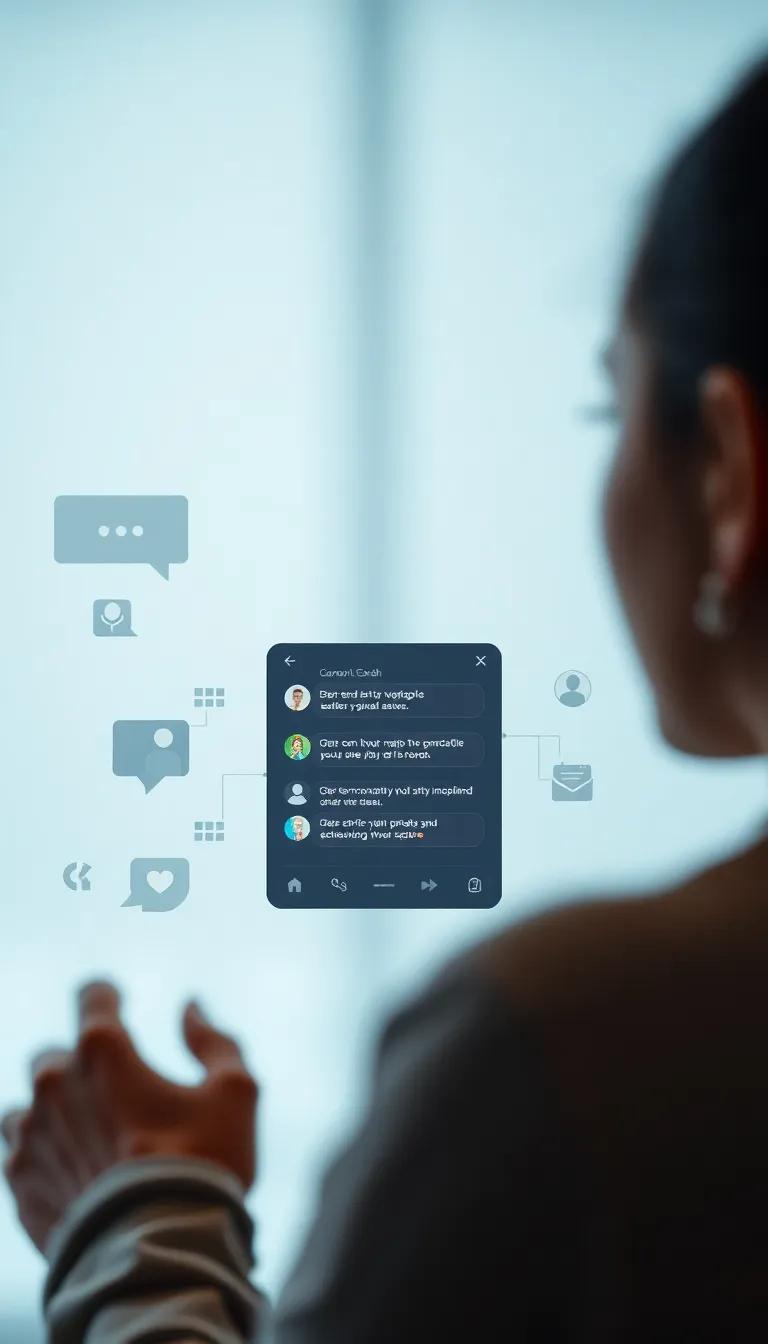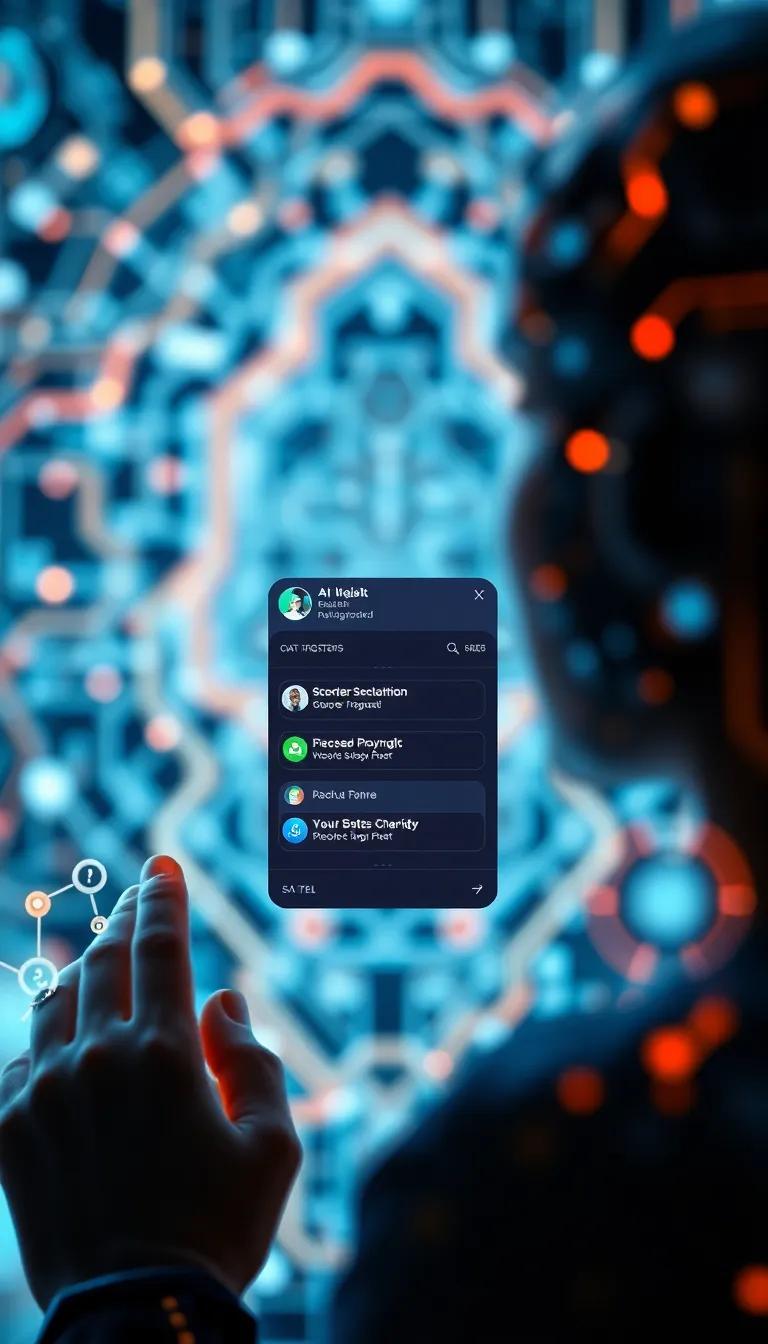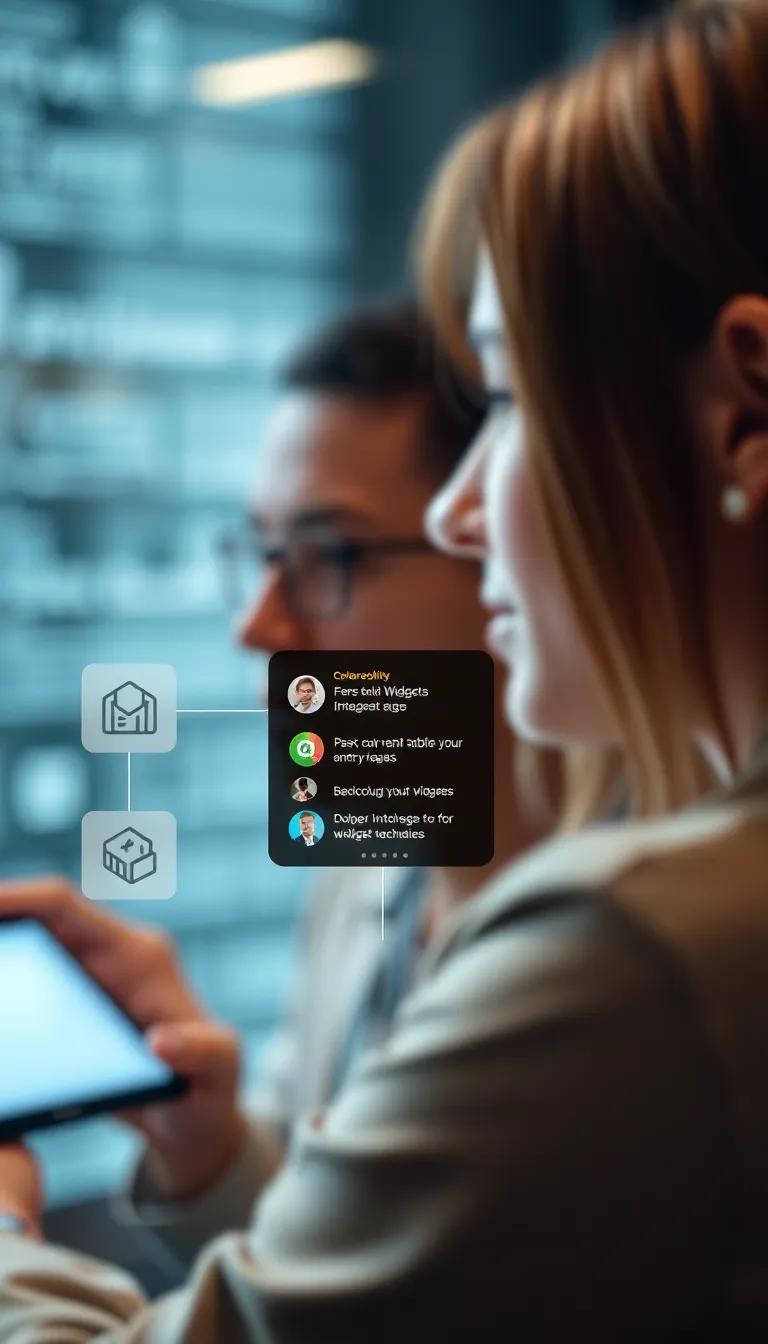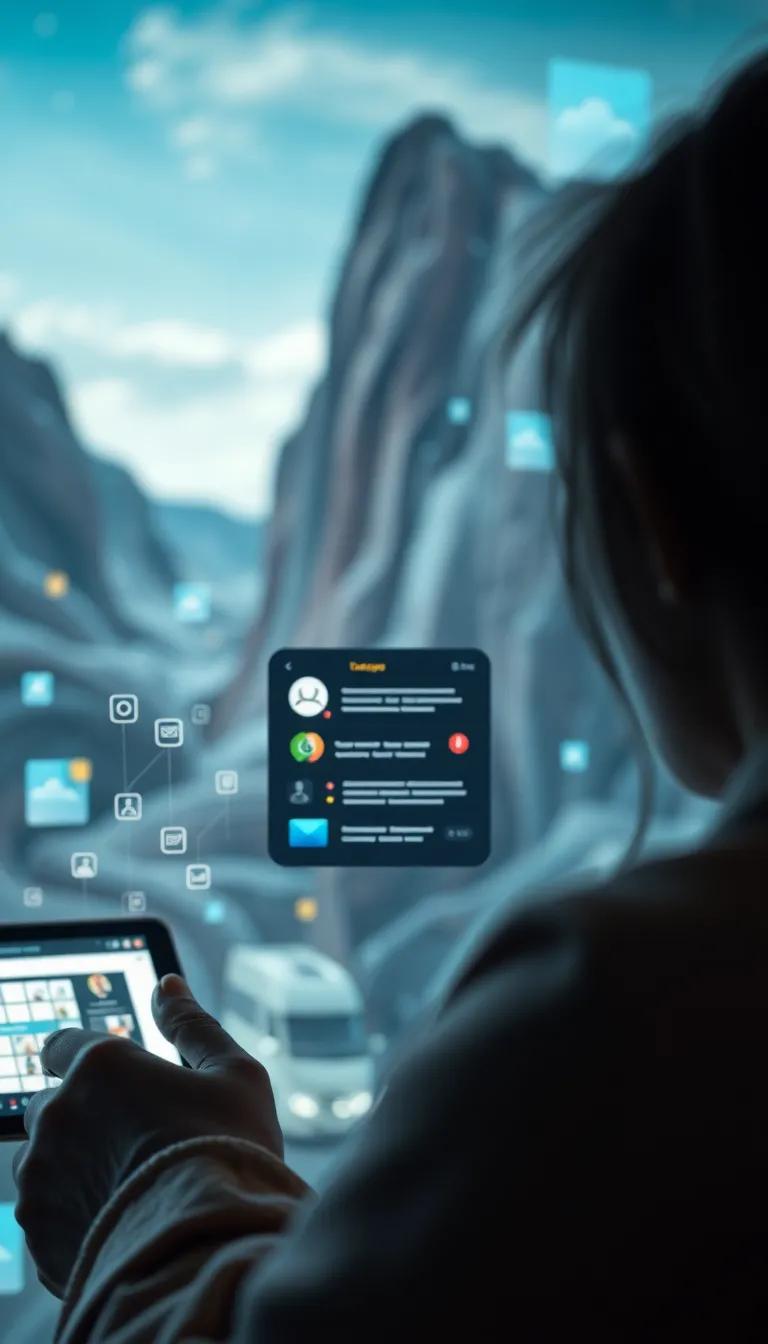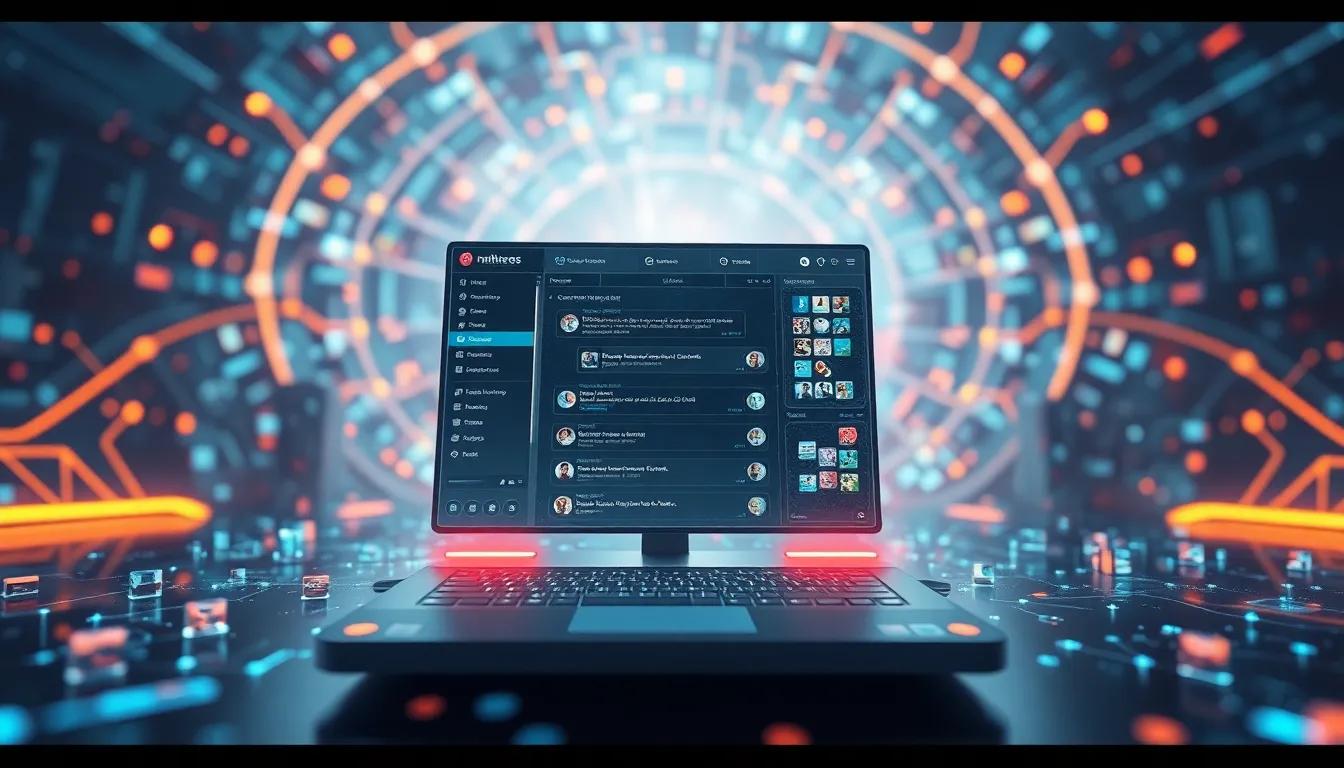Introduction
The growth of widgets has really changed how we chat online, especially on websites that provide free communication tools. Recently, widgets have come a long way, turning into must-have tools for real-time conversations between users and businesses. We’ve gone from basic text boxes to advanced AI chatbots, showing how widget development connects to an overall trend of improving user interaction and support. In this piece, we’ll look at how these digital gadgets are reshaping customer service and making it easier for people everywhere to connect.
As web technologies advance, the way chat widgets are integrated into websites has also evolved. Modern chat solutions incorporate features powered by artificial intelligence, ensuring that users receive personalized and timely responses to their inquiries. Moreover, the design and functionality of these widgets are tailored to improve usability and satisfaction among users, fostering a more interactive online environment. This exploration will cover the history of widget evolution, current innovations, and future prospects, shedding light on their growing importance in the digital conversation landscape.
Widget Evolution The Origins of Widgets
The journey of widgets can be traced back to the formative days of web development, where they were initially designed as simple tools to provide users with specific functionalities. Early web widgets date back to the mid-1990s, when internet access was becoming more mainstream. Their primary purpose was to enhance user experience by enabling basic interactivity on static web pages, which were otherwise relatively limited in scope.
In those first iterations, widgets were rudimentary. They often consisted of basic functionalities such as guestbooks, simple forms, and clutter-free navigation menus. Their design focused on addressing user needs for communication and interaction within a largely passive digital environment. As web technologies advanced, so did the design and functionality of these tools. The advent of JavaScript allowed developers to create smarter, more dynamic widgets that responded to user actions in real time, like dropdown menus and interactive maps.
In the early 2000s, the rise of social media platforms brought another significant phase of evolution. Widgets began to incorporate content sharing features, allowing users to embed elements such as video players and social feeds into their websites. This movement transformed the expectations of interactivity, pushing web developers to innovate in how they engaged users. The growing emphasis on user experience marked a departure from the simplistic designs of the past.
As technology matured, so did the functionalities of widgets. With the introduction of web standards such as HTML5 and CSS3, widgets became more visually appealing and adaptable. They transcended their original utilitarian purpose, evolving into sophisticated tools that could provide insights through analytics, customer support through chat functionalities, and connection through social media platforms. Widgets started becoming integral to website design, enhancing not only aesthetics but also enriching user engagement and retention.
The evolution of widgets is characterized by their capability to create a seamless chat experience on websites. They enable businesses to incorporate real-time communication tools that enhance the user’s interaction with a brand. As website chat experiences continue to grow in importance, widgets have become essential components for fostering meaningful connections between users and organizations.
Understanding Chat Widgets Transforming User Communication
What Are Chat Widgets?
Chat widgets represent a transformative approach to user communication on websites. These interactive tools enable real-time conversations between visitors and businesses, fostering a more engaging and personalized user experience. By seamlessly integrating into webpages, chat widgets serve as a bridge for overcoming typical barriers to communication, allowing users to ask questions, seek assistance, or provide feedback without the delays often associated with traditional methods like email or phone calls.
The primary function of chat widgets is to facilitate immediate interaction. Unlike static help sections or FAQs that often leave users searching for answers, chat widgets empower users to engage actively. They simplify the process of obtaining information, which can significantly reduce frustration and enhance satisfaction. This responsiveness is particularly vital in today’s fast-paced environment, where users expect to find solutions swiftly.
Enhancing User Interaction
Chat widgets have evolved far beyond their initial design as mere messaging tools. They now offer features that enhance user interaction in various innovative ways. For instance, many chat widgets incorporate predefined responses, enabling quick answers to common inquiries. This not only saves time for users but also optimizes the workload for support teams. Additionally, they often include functionalities such as file sharing, which allows for the seamless transfer of documents or images, further enriching the conversation.
Another significant advancement in chat widgets is their integration with analytics tools. By tracking user interactions, businesses can gain insights into common questions and concerns, enabling them to refine their services and improve the overall website experience. This data-driven approach not only personalizes user interactions but also allows companies to anticipate user needs, ultimately enhancing customer satisfaction and loyalty.
Chat widgets promote inclusivity by offering multilingual options. This feature is essential for businesses operating in diverse markets, allowing them to engage with a broader audience and cater to various language preferences. As a result, users feel a stronger connection to the brand, fostering trust and encouraging repeat visits.
As the landscape of digital interaction continues to evolve, chat widgets stand at the forefront, continually adapting to meet user expectations and enhance communication. Their ability to provide immediate support and personalized experiences positions them as a crucial element in the free website chat experience, setting the stage for the integration of advanced technologies, such as artificial intelligence, in the chapters that follow.
The Role of Artificial Intelligence in Widget Evolution
Revolutionizing User Interaction through AI Integration
In the context of chat widgets, the integration of artificial intelligence (AI) is transforming how users interact with websites, significantly enhancing the user experience. Traditionally, chat widgets provided limited capabilities, mainly facilitating simple question-and-answer exchanges. However, the evolution of AI has ushered in features like natural language processing (NLP), machine learning, and sentiment analysis, providing a richer interaction. These advancements allow chat widgets to understand and respond to user inquiries with a human-like quality, creating a more engaging environment.
With NLP analytics, chat widgets can interpret user intent with precision, leading to quicker and more accurate responses. For businesses, this translates to improved customer satisfaction, as users receive immediate assistance without waiting for human agents. The efficiency brought by AI-powered systems is invaluable, particularly during peak traffic periods when human support may be overwhelmed. This level of support not only improves the service experience for users but also reduces operational costs for businesses, allowing resources to be allocated more effectively.
Enhancing Business Efficiency through Intelligent Features
The impact of AI on chat widgets extends beyond user interactions; it significantly boosts business efficiency. For instance, many AI systems in chat widgets are equipped with predictive analytics, which can analyze user behavior and preferences. This capability enables businesses to offer personalized recommendations and proactive solutions, thereby increasing conversion rates and customer loyalty. With the assistance of AI, chat widgets can also gather and analyze data from conversations to identify trends and areas for improvement, facilitating smarter business decisions.
Another noteworthy advancement is the use of AI-powered chatbots, which can handle a multitude of inquiries simultaneously. This multitasking ability alleviates the workload on live agents and ensures that users always have access to support. The automation of routine tasks allows human agents to concentrate on more complex issues, enhancing the overall quality of support provided. As a result, businesses can optimize their customer service while maintaining high levels of satisfaction.
The integration of AI in chat widgets is fundamentally reshaping the landscape of online customer interactions. With responsive, intelligent systems at their disposal, businesses are better equipped to meet user needs while enhancing operational efficiency. This evolution is paving the way for a future where seamless communication and support are commonplace on digital platforms.
Current Trends in Widget Development Usability and Feature Enhancements
The landscape of chat widget development is undergoing rapid transformation, driven by the need for enhanced usability and feature advancements. These trends are not simply improvements; they represent a significant shift towards creating more intuitive and engaging user experiences.
One of the most noticeable trends has been the focus on customization. Businesses are now prioritizing the ability to tailor chat widgets to align with their brand identity. This encompasses everything from aesthetic elements like colors and fonts to personalized greetings and automated responses. Enhanced personalization not only creates a cohesive user experience but also fosters a sense of familiarity and trust among users.
A key feature gaining traction in chat widget development is the integration of multimedia options. Rather than relying solely on text, modern chat widgets are increasingly incorporating video, images, and voice messaging capabilities. This shift allows users to communicate in a more dynamic manner, further enriching the interaction and enabling businesses to convey their messages more effectively.
Another significant advancement is the use of context-aware chat widgets. These intelligent systems leverage user data and behavior patterns to provide relevant assistance and recommendations in real time. For instance, if a user is browsing a particular product category, the widget can initiate a conversation offering insights or answering common questions about those products, significantly enhancing user engagement.
The evolution of integration capabilities is noteworthy. Enhanced APIs allow for seamless connectivity between chat widgets and other business tools such as CRM systems and email marketing platforms. This capability ensures that businesses can maintain a unified approach to customer interactions, streamlining the process and providing comprehensive insights into user behavior.
More and more, businesses are focusing on analytics and reporting tools in their chat widgets. They’re really keen on figuring out how well their chat interactions are working. These analytics tools help them track important stuff like response times, customer satisfaction, and how engaged people are in the chats. This way, they can make smart choices based on the data to improve their overall performance.
Incorporating chat widgets into websites is no longer about basic functionality; it’s about implementing a comprehensive strategy that prioritizes usability and ongoing feature enhancement. As these trends continue to evolve, businesses are better equipped to create a more interactive and satisfactory chat experience for their users.
Case Studies of Successful Implementations Accelerating the Free Website Chat Experience
Real-World Applications of Chat Widgets
As businesses increasingly adopt chat widgets, several case studies illustrate how these tools have transformed customer interactions and enhanced outcomes. One remarkable example is a mid-sized e-commerce platform specializing in handmade crafts. Upon integrating a chat widget onto their homepage, they observed a 30% increase in conversion rates. The chat widget facilitated real-time customer support, allowing users to ask questions about product details, shipping information, and return policies. This immediate assistance not only reduced cart abandonment but also fostered trust and satisfaction among visitors.
Another compelling case comes from a financial services company that switched to a chat widget solution capable of leveraging artificial intelligence. They wanted to streamline their customer service while maintaining a personalized touch. By deploying a smart chat widget, users could access FAQs, initiate surveys, and schedule consultations directly through the chat interface. The results were extraordinary: a 25% reduction in customer service call volume and a significant improvement in customer retention rates. The flexibility offered by the widget empowered users to resolve concerns swiftly, making them feel valued and engaged.
In the hospitality industry, a popular hotel chain implemented a chat widget on their website and mobile app. This widget allowed guests to inquire about room availability, special packages, and restaurant reservations directly online. The hotel noted an impressive uptick in booking rates, with the widget contributing to a 40% increase in direct bookings as opposed to third-party bookings. This case highlights how integrating a chat widget enhanced the customer journey, making it seamless and efficient, while simultaneously boosting the hotel’s revenue.
A tech startup focusing on app development used chat widgets to create an interactive onboarding experience for new users. They integrated the widget with tutorials and immediate access to customer support. Users reported a higher satisfaction rate and increased app usage due to the ease of navigating initial setup processes with the help of real-time assistance. The startup successfully converted 50% of trial users into paying customers, showcasing how effective communication through chat can drive business growth.
These case studies vividly demonstrate the value of chat widgets in enhancing user interaction. Through real-time communication, they not only address immediate customer needs but also contribute positively to business outcomes. As widgets continue to evolve, further examples of their transformative power will emerge, underscoring their role in modern web communication strategies.
Future Prospects for Widget Evolution Enhancing Free Website Chat Interactions
Anticipated Developments in Chat Widgets
The future of chat widgets is poised for significant transformation, driven by the relentless pace of technological advancements and evolving user expectations. As businesses increasingly prioritize customer engagement, the integration of artificial intelligence and machine learning into chat widgets represents a major leap forward. These technologies can enable chat widgets to deliver personalized experiences by analyzing user behavior and preferences in real time. For instance, a chat widget may suggest tailored solutions or content based on a user’s past interactions, enhancing the relevance of communications and, ultimately, customer satisfaction.
Another potential development lies in the implementation of voice-driven chat capabilities. As voice recognition technology becomes more sophisticated, users may prefer to interact with chat widgets via voice commands rather than traditional text input. This evolution not only caters to user preferences but also makes interactions more accessible for individuals with disabilities or those in environments where typing is impractical.
Implications for Web Communication
The implication of these advancements is profound, promising to redefine web communication in various ways. First, chat widgets equipped with advanced AI can facilitate 24/7 customer support, reducing wait times and increasing efficiency. This situation allows businesses to remain responsive to customer inquiries at all hours, thereby enhancing customer relationships and loyalty.
Also the shift to multi-modal interactions where chat tools can mix text voice video and even augmented reality gives us amazing ways to communicate. For example a customer might start a chat get help through text and then switch to a video call if they need more support. This flexibility is probably going to make conversations between users and businesses feel smooth and help make resolving issues easier.
You can’t ignore how much chat widgets could connect better with other online platforms. As these tools keep getting better, they might link up smoothly with social media, online shopping sites, and customer relationship management systems to create a more unified and effective way to communicate. This kind of connection not only helps with personal chats but also allows for sharing data that could shape marketing strategies and enhance how businesses reach out to customers.
The future of chat widgets looks really exciting and it’s set to change the way businesses and customers talk to each other online. By using new tech and mixing different ways to interact, companies can offer experiences that are more engaging, efficient, and personalized to meet the changing needs of their audiences.
Conclusions
The way widgets have changed shows a big leap in making chat on websites better. They give businesses the power to talk to customers right away which helps make communication smoother and offers a way for immediate help and interaction. With artificial intelligence and a focus on what users need, chatting online is evolving to be more efficient and easier to use than ever.
As we look ahead, the future of widget technology promises even more innovations that will further enrich the online chat experience. With emerging trends in conversational AI and customization, widgets will likely evolve to meet ever-changing user expectations, ensuring they remain vital components of website functionality. The insights discussed in this article highlight the importance of keeping pace with technological advancements and leveraging them to enhance user interaction.




